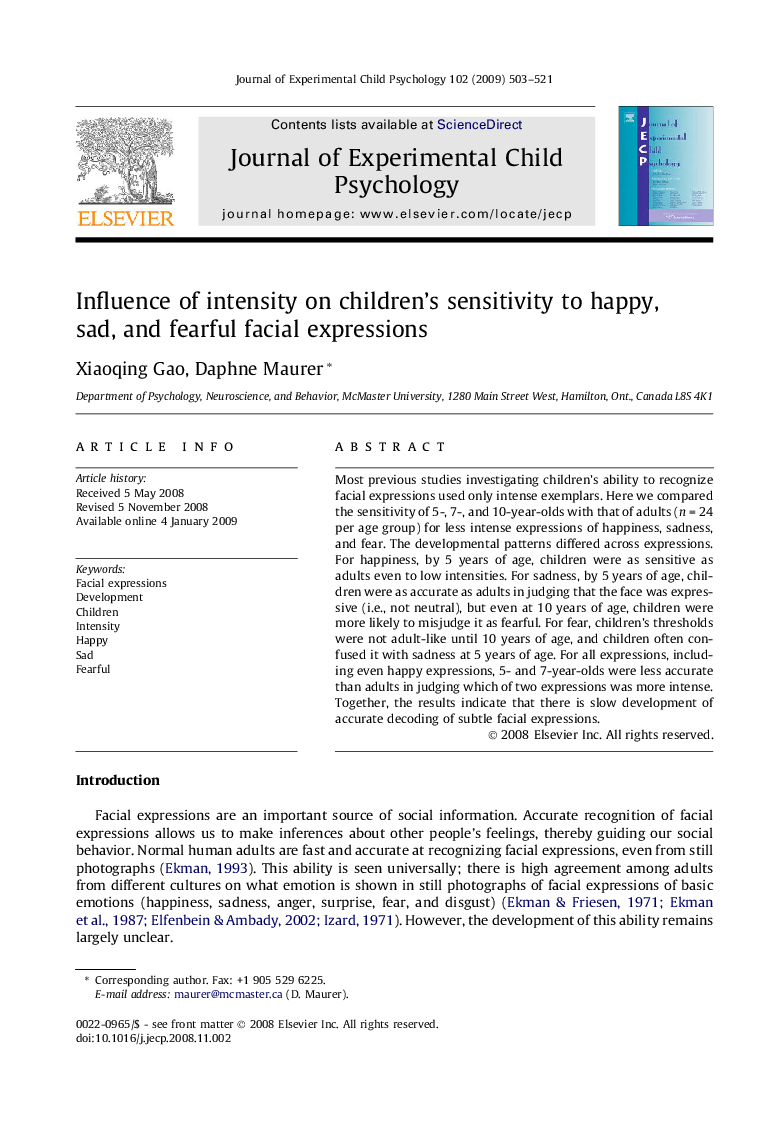| Article ID | Journal | Published Year | Pages | File Type |
|---|---|---|---|---|
| 918649 | Journal of Experimental Child Psychology | 2009 | 19 Pages |
Most previous studies investigating children’s ability to recognize facial expressions used only intense exemplars. Here we compared the sensitivity of 5-, 7-, and 10-year-olds with that of adults (n = 24 per age group) for less intense expressions of happiness, sadness, and fear. The developmental patterns differed across expressions. For happiness, by 5 years of age, children were as sensitive as adults even to low intensities. For sadness, by 5 years of age, children were as accurate as adults in judging that the face was expressive (i.e., not neutral), but even at 10 years of age, children were more likely to misjudge it as fearful. For fear, children’s thresholds were not adult-like until 10 years of age, and children often confused it with sadness at 5 years of age. For all expressions, including even happy expressions, 5- and 7-year-olds were less accurate than adults in judging which of two expressions was more intense. Together, the results indicate that there is slow development of accurate decoding of subtle facial expressions.
